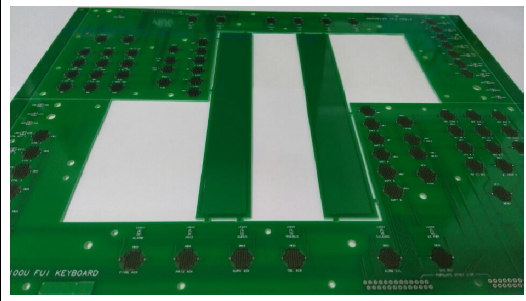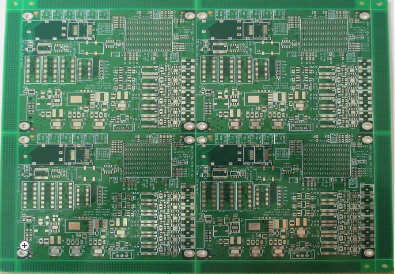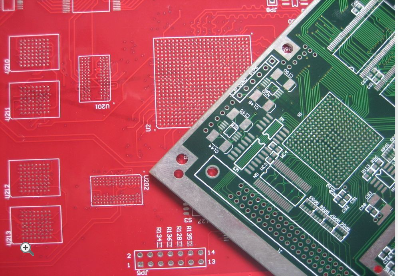-
 Agriculture
Agriculture
-
 Health-Care
Health-Care
-
 Environment
Environment
-
 Construction-Real-Estate
Construction-Real-Estate
-
 Tools-Hardware
Tools-Hardware
-
 Home-Garden
Home-Garden
-
 Furniture
Furniture
-
 Luggage-Bags-Cases
Luggage-Bags-Cases
-
 Medical-devices-Supplies
Medical-devices-Supplies
-
 Gifts-Crafts
Gifts-Crafts
-
 Sports-Entertainment
Sports-Entertainment
-
 Food-Beverage
Food-Beverage
-
 Vehicles-Transportation
Vehicles-Transportation
-
 Power-Transmission
Power-Transmission
-
 Material-Handling
Material-Handling
-
 Renewable-Energy
Renewable-Energy
-
 Safety
Safety
-
 Testing-Instrument-Equipment
Testing-Instrument-Equipment
-
 Construction-Building-Machinery
Construction-Building-Machinery
-
 Pet-Supplies
Pet-Supplies
-
 Personal-Care-Household-Cleaning
Personal-Care-Household-Cleaning
-
 Vehicle-Accessories-Electronics-Tools
Vehicle-Accessories-Electronics-Tools
-
 School-Office-Supplies
School-Office-Supplies
-
 Packaging-Printing
Packaging-Printing
-
 Mother-Kids-Toys
Mother-Kids-Toys
-
 Business-Services
Business-Services
-
 Commercial-Equipment-Machinery
Commercial-Equipment-Machinery
-
 Apparel-Accessories
Apparel-Accessories
-
 Security
Security
-
 Shoes-Accessories
Shoes-Accessories
-
 Vehicle-Parts-Accessories
Vehicle-Parts-Accessories
-
 Jewelry-Eyewear-Watches-Accessories
Jewelry-Eyewear-Watches-Accessories
-
 Lights-Lighting
Lights-Lighting
-
 Fabric-Textile-Raw-Material
Fabric-Textile-Raw-Material
-
 Fabrication-Services
Fabrication-Services
-
 Industrial-Machinery
Industrial-Machinery
-
 Consumer-Electronics
Consumer-Electronics
-
 Electrical-Equipment-Supplies
Electrical-Equipment-Supplies
-
 Electronic-Components-Accessories-Telecommunications
Electronic-Components-Accessories-Telecommunications
-
 Home-Appliances
Home-Appliances
-
 Beauty
Beauty
-
 Chemicals
Chemicals
-
 Rubber-Plastics
Rubber-Plastics
-
 Metals-Alloys
Metals-Alloys
- Masonry Materials
- Curtain Walls & Accessories
- Earthwork Products
- Fireproofing Materials
- Heat Insulation Materials
- Plastic Building Materials
- Building Boards
- Soundproofing Materials
- Timber
- Waterproofing Materials
- Balustrades & Handrails
- Bathroom & Kitchen
- Flooring & Accessories
- Tiles & Accessories
- Door, Window & Accessories
- Fireplaces & Stoves
- Floor Heating Systems & Parts
- Stairs & Stair Parts
- Ceilings
- Elevators & Escalators
- Stone
- Countertops, Vanity Tops & Table Tops
- Mosaics
- Metal Building Materials
- Multifunctional Materials
- Ladders & Scaffoldings
- Mouldings
- Corner Guards
- Decorative Films
- Formwork
- Building & Industrial Glass
- Other Construction & Real Estate
- Wallpapers/Wall panels
- HVAC System & Parts
- Outdoor Facilities
- Prefabricated Buildings
- Festive & Party Supplies
- Bathroom Products
- Household Sundries
- Rain Gear
- Garden Supplies
- Household Cleaning Tools & Accessories
- Lighters & Smoking Accessories
- Home Storage & Organization
- Household Scales
- Smart Home Improvement
- Home Textiles
- Kitchenware
- Drinkware & Accessories
- Dinnerware, Coffee & Wine
- Home Decor
- Golf
- Fitness & Body Building
- Amusement Park Facilities
- Billiards, Board Game,Coin Operated Games
- Musical Instruments
- Outdoor Affordable Luxury Sports
- Camping & Hiking
- Fishing
- Sports Safety&Rehabilitation
- Ball Sports Equipments
- Water Sports
- Winter Sports
- Luxury Travel Equipments
- Sports Shoes, Bags & Accessories
- Cycling
- Other Sports & Entertainment Products
- Artificial Grass&Sports Flooring&Sports Court Equipment
- Scooters
- Food Ingredients
- Honey & Honey Products
- Snacks
- Nuts & Kernels
- Seafood
- Plant & Animal Oil
- Beverages
- Fruit & Vegetable Products
- Frog & Escargot
- Bean Products
- Egg Products
- Dairy Products
- Seasonings & Condiments
- Canned Food
- Instant Food
- Baked Goods
- Other Food & Beverage
- Meat & Poultry
- Confectionery
- Grain Products
- Feminie Care
- Hair Care & Styling
- Body Care
- Hands & Feet Care
- Hygiene Products
- Men's Grooming
- Laundry Cleaning Supplies
- Travel Size & Gift Sets
- Room Deodorizers
- Other Personal Care Products
- Pest Control Products
- Special Household Cleaning
- Floor Cleaning
- Kitchen & Bathroom Cleaning
- Oral Care
- Bath Supplies
- Yellow Pages
- Correction Supplies
- Office Binding Supplies
- Office Cutting Supplies
- Board Erasers
- Office Adhesives & Tapes
- Education Supplies
- Pencil Cases & Bags
- Notebooks & Writing Pads
- File Folder Accessories
- Calendars
- Writing Accessories
- Commercial Office Supplies
- Pencil Sharpeners
- Pens
- Letter Pad/Paper
- Paper Envelopes
- Desk Organizers
- Pencils
- Markers & Highlighters
- Filing Products
- Art Supplies
- Easels
- Badge Holder & Accessories
- Office Paper
- Printer Supplies
- Book Covers
- Other Office & School Supplies
- Stationery Set
- Boards
- Clipboards
- Stamps
- Drafting Supplies
- Stencils
- Electronic Dictionary
- Books
- Map
- Magazines
- Calculators
- Baby & Toddler Toys
- Educational Toys
- Classic Toys
- Dress Up & Pretend Play
- Toy Vehicle
- Stuffed Animals & Plush Toys
- Outdoor Toys & Structures
- Balloons & Accessories
- Baby Food
- Children's Clothing
- Baby Supplies & Products
- Maternity Clothes
- Kids Shoes
- Baby Care
- Novelty & Gag Toys
- Dolls & Accessories
- Puzzle & Games
- Blocks & Model Building Toys
- Toddler Clothing
- Baby Clothing
- Kids' Luggage & Bags
- Arts, Crafts & DIY Toys
- Action & Toy Figures
- Baby Appliances
- Hobbies & Models
- Remote Control Toys
- Promotional Toys
- Pregnancy & Maternity
- Hygiene Products
- Kid's Textile&Bedding
- Novelty & Special Use
- Toy Weapons
- Baby Gifts
- Baby Storage & Organization
- Auto Drive Systems
- ATV/UTV Parts & Accessories
- Marine Parts & Accessories
- Other Auto Parts
- Trailer Parts & Accessories
- Auto Transmission Systems
- Train Parts & Accessories
- Universal Parts
- Railway Parts & Accessories
- Auto Brake Systems
- Aviation Parts & Accessories
- Truck Parts & Accessories
- Auto Suspension Systems
- Auto Lighting Systems
- New Energy Vehicle Parts & Accessories
- Auto Steering Systems
- Wheels, Tires & Accessories
- Bus Parts & Accessories
- Auto Performance Parts
- Cooling System
- Go-Kart & Kart Racer Parts & Accessories
- Air Conditioning Systems
- Heavy Duty Vehicle Parts & Accessories
- Auto Electrical Systems
- Auto Body Systems
- Auto Engine Systems
- Container Parts & Accessories
- Motorcycle Parts & Accessories
- Refrigeration & Heat Exchange Equipment
- Machine Tool Equipment
- Food & Beverage Machinery
- Agricultural Machinery & Equipment
- Apparel & Textile Machinery
- Chemical Machinery
- Packaging Machines
- Paper Production Machinery
- Plastic & Rubber Processing Machinery
- Industrial Robots
- Electronic Products Machinery
- Metal & Metallurgy Machinery
- Woodworking Machinery
- Home Product Manufacturing Machinery
- Machinery Accessories
- Environmental Machinery
- Machinery Service
- Electrical Equipment Manufacturing Machinery
- Industrial Compressors & Parts
- Tobacco & Cigarette Machinery
- Production Line
- Used Industrial Machinery
- Electronics Production Machinery
- Other Machinery & Industrial Equipment
- Camera, Photo & Accessories
- Portable Audio, Video & Accessories
- Television, Home Audio, Video & Accessories
- Video Games & Accessories
- Mobile Phone & Accessories
- Electronic Publications
- Earphone & Headphone & Accessories
- Speakers & Accessories
- Smart Electronics
- TV Receivers & Accessories
- Mobile Phone & Computer Repair Parts
- Chargers, Batteries & Power Supplies
- Used Electronics
- VR, AR, MR Hardware & Software
- Projectors & Presentation Equipments
- Other Consumer Electronics
- Cables & Commonly Used Accessories
- Computer Hardware & Software
- Displays, Signage and Optoelectronics
- Discrete Semiconductors
- Wireless & IoT Module and Products
- Telecommunications
- Connectors, Terminals & Accessories
- Development Boards, Electronic Modules and Kits
- Circuit Protection
- Sensors
- Isolators
- Audio Components and Products
- Integrated Circuits
- Power Supplies
- Relays
- RF, Microwave and RFID
- Electronic Accessories & Supplies
- Passive Components
- PCB & PCBA
- Air Quality Appliances
- Home Appliance Parts
- Heating & Cooling Appliances
- Small Kitchen Appliances
- Laundry Appliances
- Water Heaters
- Water Treatment Appliances
- Refrigerators & Freezers
- Personal Care & Beauty Appliances
- Major Kitchen Appliances
- Cleaning Appliances
- Second-hand Appliances
- Smart Home Appliances
- Other Home Appliances
- Energy Chemicals
- Inorganic Chemicals
- Basic Organic Chemicals
- Agrochemicals
- Admixture & Additives
- Catalysts & Chemical Auxiliary Agents
- Pigments & Dyestuff
- Coating & Paint
- Daily Chemicals
- Polymer
- Organic Intermediate
- Adhesives & Sealants
- Chemical Waste
- Biological Chemical Products
- Surface Treatment Chemicals
- Painting & Coating
- Chemical Reagents
- Flavor & Fragrance
- Non-Explosive Demolition Agents
- Other Chemicals
- Custom Chemical Services
Reliable Multilayer PCB Manufacturing For Industrial Grade Server Motherboards With Extended Lifespan
In the realm of industrial computing, where operational continuity is paramount, the server motherboard stands as the critical backbone. These systems power everything from factory automation and data centers to telecommunications infrastructure and medical equipment, often operating in harsh environments and under constant, heavy loads. The demand for reliability and an extended operational lifespan is non-negotiable, as downtime can result in catastrophic financial losses or safety hazards. At the heart of such robust systems lies a component whose quality dictates overall performance: the multilayer Printed Circuit Board (PCB). The manufacturing of reliable multilayer PCBs is not merely a step in production; it is a sophisticated engineering discipline essential for creating industrial-grade server motherboards capable of enduring a decade or more of service. This article delves into the critical aspects of this manufacturing process, exploring how precision, material science, and rigorous testing converge to build the foundation for unwavering computational power.
Advanced Material Selection and Lamination
The journey towards reliability begins with the fundamental building blocks: the materials. Unlike standard consumer-grade PCBs, industrial server motherboards require substrates with exceptional thermal, mechanical, and electrical properties. Standard FR-4 material, while cost-effective, may not suffice for high-power, high-heat applications. Instead, high-performance laminates such as Isola FR408HR, Nelco N4000-13, or even polyimide are often selected. These materials offer a higher Glass Transition Temperature (Tg), typically above 170°C, which prevents the board from softening and deforming under sustained thermal stress. This is crucial for server motherboards that incorporate high-wattage CPUs and dense component arrays, ensuring dimensional stability over years of thermal cycling.
Furthermore, the lamination process itself is a critical determinant of longevity. Multilayer PCBs for servers can consist of 12, 16, or even more layers, each containing intricate power and signal planes. The lamination process must ensure a void-free bond between these layers, achieved through precise control of heat, pressure, and vacuum. Any imperfection, such as delamination or resin starvation, can lead to intermittent failures or catastrophic short circuits under operational stress. The use of prepreg materials with controlled flow characteristics is essential to fill all gaps and create a homogeneous, robust board structure capable of withstanding mechanical shock and vibration common in industrial settings.
Precision in Layer Alignment and Controlled Impedance
As server motherboard designs push the boundaries of speed and complexity, with data buses operating at multiple gigabits per second, the physical layout of the PCB becomes as critical as the electronic design. Layer-to-layer registration, or alignment, is paramount. Misalignment between layers can alter the characteristic impedance of critical high-speed traces, such as those for DDR memory or PCI Express interfaces, leading to signal integrity issues, data corruption, and system instability. State-of-the-art manufacturing employs optical punch systems and laser direct imaging (LDI) to achieve registration tolerances of within 25 microns, ensuring that the intricate network of vias and traces aligns perfectly across all layers.
This precision directly enables controlled impedance routing. Impedance is not a property of the trace alone but of the entire transmission line structure, which includes the trace width, its distance to the reference plane, and the dielectric constant of the substrate material. Reliable manufacturers work closely with design engineers to model these parameters before production. They then meticulously control the etching process to achieve the exact trace geometries and utilize testing methods like Time-Domain Reflectometry (TDR) on coupon samples to verify that the impedance values are within the strict tolerance limits, often +/- 10%. This rigorous control is fundamental to ensuring signal integrity and, consequently, the long-term reliable operation of the server.
Robust Via Structures and Thermal Management
The interconnections between layers, known as vias, are potential points of failure, especially under thermal stress. Standard through-hole vias are susceptible to failure due to the differing coefficients of thermal expansion (CTE) between the copper barrel and the surrounding FR-4 material. For industrial-grade longevity, more robust via structures are employed. Blind and buried vias allow for higher routing density in complex designs, but it is the use of filled vias that significantly enhances reliability. Vias are filled with conductive or non-conductive epoxy and capped, which prevents air entrapment and provides a stable surface for component placement. This process mitigates the risk of via barrel cracking during thermal cycling.
Thermal management is inextricably linked to reliability. Industrial servers generate substantial heat, and if not effectively dissipated, this heat accelerates the aging of components and the PCB itself. The multilayer PCB serves as a primary heat dissipation path. This is achieved by incorporating dedicated internal copper planes that act as heat spreaders. For the most demanding applications, the PCB may be manufactured with heavy copper weights (e.g., 3 oz or more) on inner layers to enhance current carrying capacity and thermal conductivity. Additionally, thermal vias are strategically placed under high-power components like processors and voltage regulators. These arrays of vias create a low-thermal-resistance path, channeling heat from the component side into the internal ground planes, thereby stabilizing operating temperatures and extending the lifespan of the entire assembly.
Stringent Quality Assurance and Testing Protocols
The final pillar of reliable multilayer PCB manufacturing is an uncompromising quality assurance regimen. This begins with Automated Optical Inspection (AOI) to detect surface defects like scratches, nicks, or insufficient solder mask coverage. However, for multilayer boards, the most critical tests are those that verify the integrity of the internal layers. Electrical test fixtures are used to perform a "bed-of-nails" test, checking for opens and shorts on every net defined in the design. This 100% electrical test is non-negotiable for server motherboards, as a single internal short could render the entire board useless.
Beyond connectivity, accelerated life testing is often conducted on sample boards to simulate years of operation within a short period. This can include Thermal Cycle Testing (TCT), where boards are subjected to repeated cycles of extreme hot and cold temperatures to identify potential weaknesses in the laminate, plating, or solder joints. Highly Accelerated Life Testing (HALT) and Highly Accelerated Stress Screening (HASS) push the boards beyond their specified limits to uncover failure modes and establish a margin of safety. For high-reliability applications, these rigorous protocols are not optional; they are essential for validating that the manufacturing process consistently produces PCBs that will meet their extended lifespan requirements in the field, ensuring the industrial server's unwavering performance for a decade or more.
REPORT































































































































































































































































































































































































































































































































































































